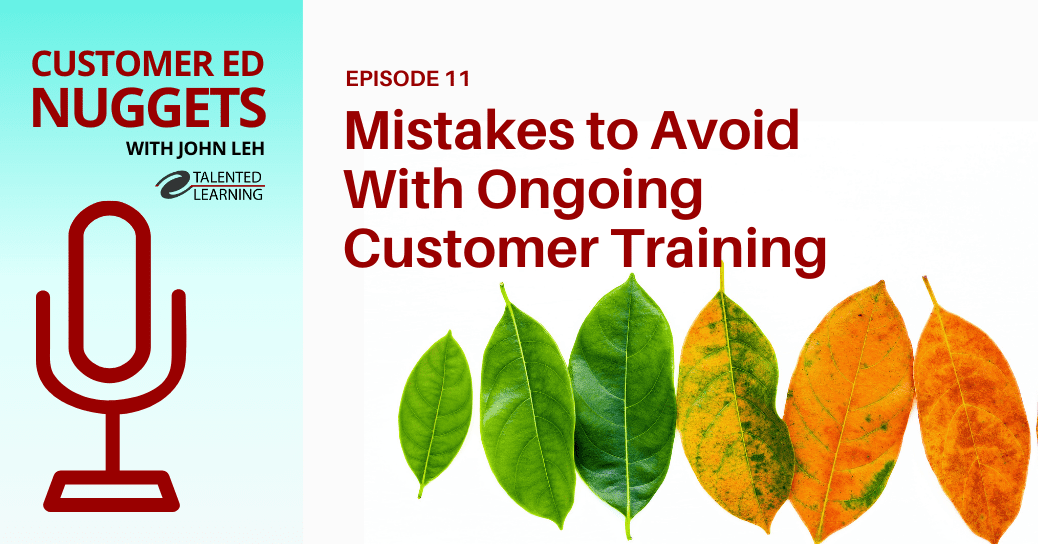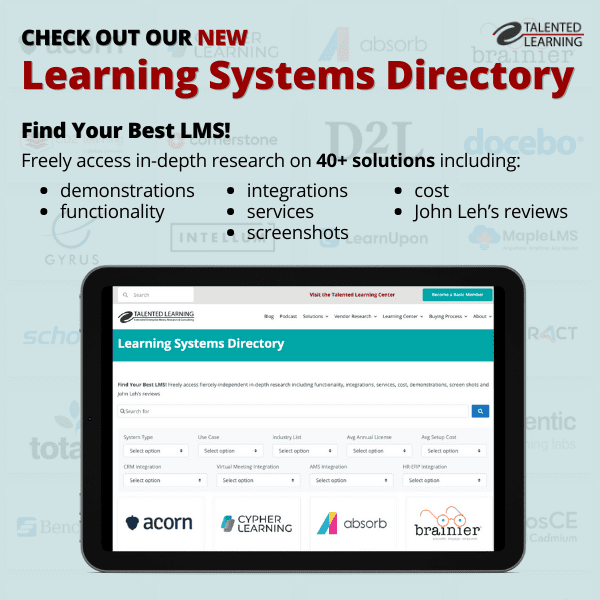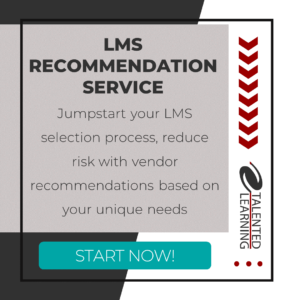
After a decade of explosive market growth, online video has reached critical mass and there’s no turning back. Countless research reports confirm that video is changing our lives profoundly at home and at work. Consider these statistics:
- Online video consumption will represent more than 80% of all internet traffic by the end of this year. (Cisco)
- 68% of people prefer to learn about a product or service by watching a short video. (Wyzowl)
- 62% of people say they “pay close attention” to video – more than any other type of content. (HubSpot)
- Employees are 75% more likely to watch a video than read documents, web pages or email at work. (Forrester)
- 54% of consumers want to see more video content from a brand or business they support. (HubSpot)
You get the picture. To engage and educate audiences at scale, you can’t beat the power and reach of online video.
Okay. So how exactly can this work for associations hoping to enhance and extend conference learning? Video may be everywhere we look these days, but effective educational footage doesn’t just appear out of thin air.
Fortunately, you don’t need Steven Spielberg’s talent or the budget of a Hollywood blockbuster. But you do need to invest in some thoughtful planning and production. Here are 10 ideas to get your creative juices flowing…
Educational Online Video – Before, During and After an Event
BEFORE
Does online video have a role in your event planning and promotional outreach? If not, consider ideas like these to improve your educational programming while injecting more personality into your conference marketing:
1) Crowdsource Your Agenda
For conference content that resonates with members, why not solicit video suggestions from your community? You can kickstart the process by creating a discussion forum on your website. Then publicly invite members to post clips describing issues and ideas that matter most to them.
Through open dialogue, you can put these submissions at the center of a co-creation process that gives members a stake in your conference success. This may take more time than a private, top-down approach. But imagine the excitement and support you’ll generate as you prioritize topics and build-out session tracks.
2) Showcase Members As Your Video “Stars”
Leverage the most compelling agenda submissions by featuring sound bites from their videos in your conference communications. Then embed calls-to-action on your website, in event-related blog posts, in email newsletters and on social channels. The sky’s the limit.
This is an easy way to put a “face” on your association, while creating interest in the event and highlighting the educational benefits of attending. It’s also a natural way to humanize your organization’s brand and clarify its value proposition.
3) Add Sizzle With Time-Lapse Video
Want an easy, inexpensive way to create cool video content that you can use to attract attention and interest before, during and after any conference? You can’t go wrong with time-lapse video.
As Keith Johnston of Plannerwire explains, for less than $20 you can turn your smartphone into a powerful time-lapse tool. The results can be compelling. Want to see for yourself? The Employee Ownership Association built a photo montage of conference attendees in this short, simple example:
Or, for a more sophisticated approach, check out this TED Conference pop-up theater build in Vancouver. Fascinating!
Of course, getting this right requires careful advance planning and preparation, as well as post-production editing. But once you lock-in a video that captures the essence of your conference in motion, you’ll have a highly accessible “evergreen” brand asset.
DURING
To make the most of conference-related video for educational purposes, focus on creating an environment that lets 1000 flowers bloom. You’ll want to capture each moment as it happens, from as many corners of the event as your budget and resources allow. But whatever you do, don’t let those moments pass. Associations invest too much time and effort in conferences to ignore video’s power and reach.
Just how valuable is video, anyway? According to Digitell, 20-40% of people who live-stream an event will attend in-person the next year. This upsell effect is just one reason why smart conference planners cast a broad online video net and think creatively about how to recombine video DNA. Here are some methods that work:
1) Live-Stream All Sessions
Live video is a natural way to leverage educational content for any conference. Organizations large and small are seeing significant results, as these cases illustrate:
• In 2016, more than 1,000 advertising, marketing and media leaders gathered to share ideas and insights at the 4As Transformation Conference. But that was just the beginning. 16,600 more professionals tuned-in via live stream, and another 25,000 attended on-demand. Thanks to innovative video technology, the total audience ballooned 41x.
• Also in 2016, more than 170,000 people traveled to San Francisco to attend Dreamforce – the annual conference devoted to empowering the global Salesforce community. But thanks to live-streaming and on-demand video, session attendance actually totaled a whopping 15 million, worldwide.
Of course, live-streaming access, alone, doesn’t guarantee learning. Passively watching informational video isn’t nearly as effective as a virtual experience that connects with you at an emotional level. As event strategy consultant, Dave Lutz says, it’s important to shift the focus from mindless content “delivery” to meaningful content “discovery.”
2) Ask Ambassadors to Share Their View
Every community has its own influencers – industry observers, respected professional experts and valued association members with unique qualifications. Tap into these trusted sources by asking them to post impromptu video blogs – capturing educational experiences as they happen and offering their own take on the topic. For instance, SHRM does a great job of weaving HR “thought leader” commentary into its annual conference presence on the web and across social channels.
3) Talk With the “Man on the Street”
Deploy roving reporters to capture short interview clips throughout the conference – asking attendees what they’ve learned from their favorite sessions, how they plan to apply those ideas and which topics they want to explore more deeply.
You can share these clips on social media to generate real-time buzz. Plus, you can use this valuable feedback when developing additional learning resources and programming for future conferences.
4) Capture Candid Thoughts in a Video Booth
Building on the popularity of photo booths, invite attendees to share conference insights in “private” unscripted video snippets that everyone can share on social media. To focus the content, it helps to structure comments with guidelines like this: “In 60 seconds or less, tell us the most useful thing you’ve learned at the conference, and how you plan to apply it professionally.”
5) Let a Hashtag Be Your Calling Card
Don’t forget to create a “virtual water cooler” on social media by establishing a conference-specific hashtag and promoting its use early and often. By teaching your community to use this identifier before, during and after the conference, you’ll energize social channels with diverse conversations that transcend event space and time constraints.
Want examples? Check the latest Twitter posts for #HIMSS or #ATD2019 or #SXSW. The beat goes on all year long.
For conference hashtag best practices, I recommend reading advice from David Kelly, EVP at The eLearning Guild. David has inspired backchannel activities and content curation for countless learning industry events.
AFTER
The moment your closing session ends, all the video footage you’ve captured can become an educational goldmine – but only if you repackage it thoughtfully. Be prepared to compile, curate, edit, and recombine that video DNA in ways that are useful for your members and your broader community. Consider these ideas:
1) Tie-In Videos with Existing Online Courses
Enhance your existing LMS content catalog by adding on-demand conference sessions as standalone courses or integrating them into learning paths as companion resources.
2) Create a “Best of…” Event Video Collection
Develop a special library of short-form videos, based on excerpts from conference sessions. Promote these “top takeaway” clips as bite-sized educational content that anyone can view individually or as a series.
You can also leverage these short-form clips by featuring them in promotions for full recorded sessions, embedding them in related narrative blogs and offering them to session attendees as searchable “refresher” clips for on-demand learning reinforcement.
3) Time-Lapse Video
This is where my recommendations come full-circle. If you move forward with any of the ideas I’ve suggested, you’re bound to have more than enough footage to create the kind of time-lapse event video I outlined in the “BEFORE” section.
I’m repeating this idea as an “AFTER” action because it’s also a great way to remind participants of your event’s impact long after other conference memories fade. Think of this as an ongoing source of pride that will have timeless appeal for members and others you want to attract.
Closing Notes
Video-related tools and technologies are advancing at breakneck speed, thanks in part to phenomenal market demand. In this kind of environment, the possibilities for video-based learning experiences seem endless.
This list of ideas only scratches the surface. So I’m curious – how have you used video to enhance educational experiences before, during or after a conference? What has worked for you? What hasn’t? And what would you like to try next?
Tell me about your ideas and experiences. I look forward to hearing from you, so I can write a follow-up post focused on lessons you’ve learned and fresh ideas you want to explore. Thanks!
WANT TO LEARN MORE? REPLAY THIS WEBINAR!
How to Spark High-Impact Learning
What kind of learning experiences actually drive employee loyalty and business performance?
Join John Leh, CEO and Lead Analyst at Talented Learning, and Paul Morton, Regional Director at CrossKnowledge, for practical advice and proven examples.
You’ll discover what works – and why. Including:
- The 7 building blocks for high-impact learning
- How to create compelling learning experiences
- Ideas to enhance and repurpose existing content
- How technology can support your goals
- Guidelines for measuring and interpreting results
Share This Post
Related Posts
The Future of Customer Education: Customer Ed Nugget 16
Customer education is rapidly evolving as organizations embrace new strategies and tech. What does this mean for the future of customer education? See what experts say on this Customer Ed Nuggets episode
Education Strategy Mistakes to Avoid: Customer Ed Nugget 15
What does it take to deliver a successful customer education program? It starts with a solid education strategy. Learn how to avoid common pitfalls on this Customer Ed Nuggets episode
Which LMS is Best for You? New Shortlisting Tool for 2024
How can you find the best learning system for your business? Our LMS shortlisting tool can help. Learn about the 2024 RightFit Solution Grid. Free, reliable guidance based on our independent research
How to Build a Learning-Based Business: Executive Q&A Notes
Building and selling online courses may seem easy, but building a profitable learning-based business is far more complex. Find out what successful leaders say about running this kind of business
The Rewards of Community Building: Customer Ed Nugget 14
What role does community play in your customer relationships? Find out why community building is such a powerful force in customer education on this Customer Ed Nuggets episode
Benefits of Training Content Syndication: Customer Ed Nugget 13
If you educate customers online, why should you consider content syndication? Discover 10 compelling business benefits in this Customer Ed Nuggets episode
Top Marketing Skills to Master: Customer Ed Nugget 12
Successful customer education programs depend on professionals with expertise in multiple disciplines. Which marketing skills lead to the best results?
How to Measure and Improve Partner Training ROI
An educated channel is a successful channel. But how do you know if your educational programs are effective? Learn from an expert how to evaluate partner training ROI
Mistakes in Ongoing Customer Training: Customer Ed Nugget 11
Customer education doesn't stop with onboarding. It pays to invest in ongoing customer training. Learn which mistakes to avoid in this Customer Ed Nuggets episode














FOLLOW US ON SOCIAL